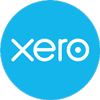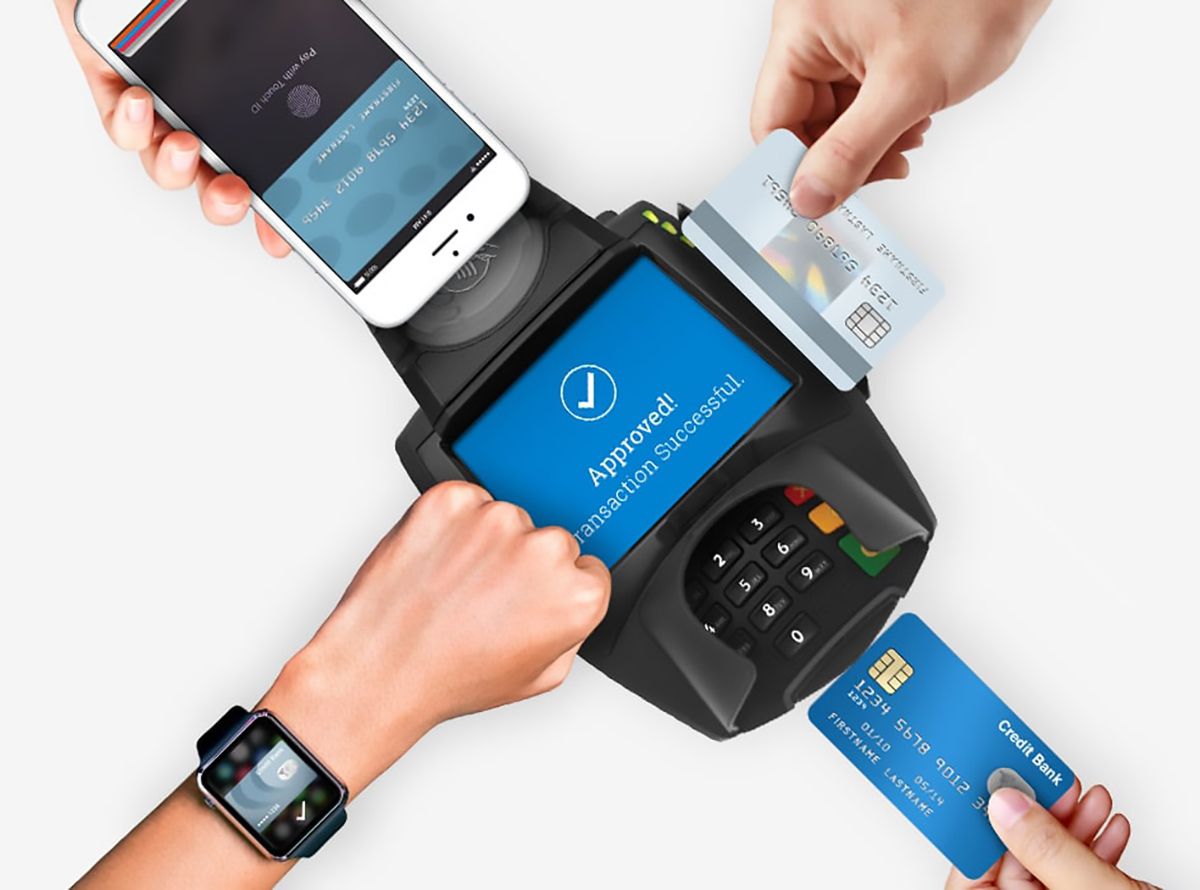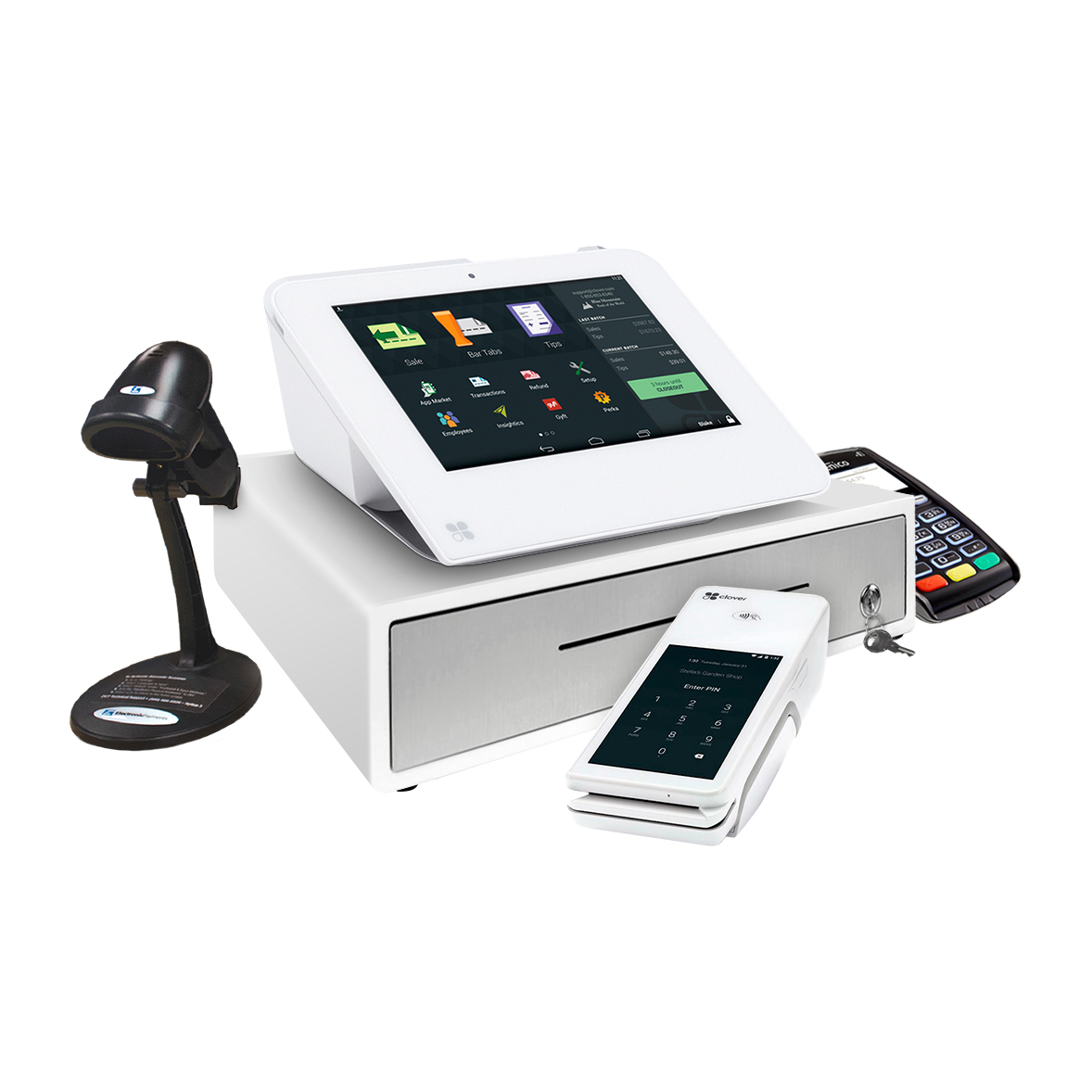Our cloud-based platform is so seamlessly integrated you would think it was part of your accounting software.




Store Multiple Payment Methods with QuickBooks

Seamless Payment Management in QuickBooks
With over two decades of experience in financial management and payment processing, I've seen countless businesses struggle with efficiently managing their payment methods. The ability to store multiple payment methods with QuickBooks is a game changer for many enterprises, enhancing flexibility and control. QuickBooks provides robust solutions that allow businesses to save time and optimize cash flow by integrating multiple payment methods within one platform.
For organizations looking to streamline their payment processes, QuickBooks offers integration with various payment options like credit cards, ACH transfers, and more. This capability is crucial for businesses eager to match their payment methods with their diverse client base. The goal is to reduce processing fees without sacrificing the quality or security of transactions.
How to Add Multiple Payment Methods to QuickBooks
Setting up and managing different payment methods in QuickBooks is straightforward. Here's a quick guide to help you get started:
- Log into QuickBooks as an admin to access your account settings.
- Navigate to Billing & Subscription under the settings menu.
- Select Edit next to your current payment method.
- Choose Add New from the wallet listing and enter the details for your preferred payment method.
- Ensure you Save the new method to your Intuit profile for future use.
Repeat these steps to store multiple payment methods with QuickBooks, allowing you to switch seamlessly between them as needed.
Why Store Multiple Payment Methods with QuickBooks?
As a financial advisor, I've encountered various scenarios where storing multiple payment methods has provided significant advantages. By utilizing QuickBooks' capabilities, businesses can maintain financial transparency and efficiency. This system allows you to allocate specific payment methods to different types of expenses or clients, simplifying bookkeeping and enhancing reporting accuracy.
In addition, having the ability to store multiple payment methods with QuickBooks significantly reduces the risks associated with transaction errors. Businesses can match payments with appropriate invoices, ensuring that each transaction is verified and reconciled in real-time.
- Increased flexibility in managing client payments
- Improved cash flow through seamless integration
- Reduced errors and increased transactional efficiency
Enhancing Business Operations with QuickBooks
QuickBooks is not just an accounting tool; it's a platform that enhances business operations. The ease of storing multiple payment methods is a testament to its robust features. By integrating with payment processors and taking advantage of automated invoicing, QuickBooks allows businesses to focus on growth rather than get bogged down by administrative tasks.
In my experience, businesses that leverage these features within QuickBooks often see a marked improvement in their financial operations. The ability to accommodate a wide range of payment methods ensures that no client is left out due to transactional limitations, ultimately enhancing customer satisfaction and retention.
What is the Best Way to Utilize Multiple Payment Methods in QuickBooks?
The best way to utilize store multiple payment methods with QuickBooks is to strategically allocate each method based on the business requirements and client needs. Start by analyzing your client base to understand which payment methods are most frequently requested.
From there, assign payment methods to recurring expenses and client accounts to streamline the reconciliation process. This strategy not only simplifies bookkeeping but also minimizes human error, ensuring that transactions are correctly matched to their corresponding accounts.

How to Optimize Recurring Payments
For over 20 years, I've worked with countless businesses to improve their payment processes. One of the most effective strategies is to enable auto pay with QuickBooks. This enables businesses to automate recurring payments and streamline cash flow. By doing so, businesses not only save time but also reduce errors that come with manual invoicing.
To get started, first ensure that your invoicing settings are correctly configured. Go to the 'Settings' tab in QuickBooks, select 'Recurring Transactions', and then create a new template for invoices. This crucial step lets you set the frequency of invoices and include payment details for customers who choose autopay.
Next, integrate your merchant services effectively. The POS Brokers can help you connect low-fee merchant accounts with QuickBooks, ensuring there's seamless integration and no tech headaches. This makes the process of enabling auto pay straightforward and efficient.
The Benefits of Enable Auto Pay with QuickBooks
Opting to enable auto pay with QuickBooks offers several advantages. Businesses report improved cash flow management as customer payments are automatically scheduled, reducing the risk of late payments. Moreover, it improves customer satisfaction by making the payment process easier for them.
Auto pay also provides an opportunity for businesses to reduce fees. By integrating with QuickBooks payment solutions and negotiating rates, businesses can significantly cut down on processing fees, which is a core service offered by The POS Brokers.
Additionally, it ensures secure transactions. With QuickBooks' advanced security measures, both you and your customers can trust that payment information is safe, aligning with PCI compliance standards.
How to Enable Auto Pay with QuickBooks
- Open QuickBooks and navigate to the 'Sales' menu.
- Select 'Recurring Transactions' and click on 'New'.
- Choose 'Invoice' as the transaction type, and set the template to auto-create.
- In the 'Payment' section, toggle the 'Enable auto pay' option.
- Ensure payment details and frequency are correctly specified.
- Finalize by saving the transaction template.
By following these steps, you can easily enable auto pay with QuickBooks and enhance your business's payment setup.
Is Auto Pay Secure with QuickBooks?
Yes, enable auto pay with QuickBooks is as secure as it is convenient. QuickBooks employs industry-standard encryption to protect sensitive financial data. Additionally, payment processes adhere to PCI compliance, ensuring the security of credit card transactions.
The POS Brokers further enhance this security by integrating advanced merchant account solutions that offer seamless and secure payment processing. This reduces the risk of fraudulent transactions and increases customer trust.
Real-World Experience and Insights
One client I assisted, a mid-sized retailer, saw a 35% increase in on-time payments within the first three months of implementing auto pay in QuickBooks. This was primarily due to the ease of setting up recurring payments, complemented by the low transaction fees negotiated through The POS Brokers.
The ability to enable auto pay with QuickBooks transformed their billing process, reducing administrative overhead and allowing the finance team to focus on strategic growth initiatives.
Another advantage shared by our clients is the reduction in human error. Manually handling invoices can lead to mistakes, impacting cash flow. Auto pay minimizes these issues, providing accurate and timely processing.
These examples highlight how strategic adoption of QuickBooks' features can drive efficiency and financial stability in businesses.
What Are Common Issues When Enabling Auto Pay with QuickBooks?
Occasionally, issues may arise when you enable auto pay with QuickBooks. These often include improper account setup, missing customer payment information, or outdated software versions causing integration problems.
To troubleshoot these, ensure your QuickBooks software is up-to-date, and double-check all account configurations. The POS Brokers can assist in diagnosing and resolving these issues promptly, ensuring a seamless experience.
Offset Augments Acceptance Costs with QuickBooks
In the ever-evolving business landscape, understanding financial efficiency is a must. One powerful tool available to businesses today is QuickBooks, especially when it comes to managing offset augment acceptance costs. As businesses strive to minimize operational costs while maintaining efficiency, integrating QuickBooks credit card processing systems can be a game-changer. At The POS Brokers, we've seen countless businesses streamline their processes through our seamless integrations.
The key to reducing acceptance costs is leveraging features like automatic invoicing, real-time reconciliation, and merchant account setups that align with your business model. We've helped numerous clients transition smoothly by negotiating better rates and offering solutions like Level 2/3 interchange optimization.
Steps to Offset Augment Acceptance Costs
Transitioning to a smarter payment structure is not as daunting as it seems. Here's a simple roadmap to manage offset augment acceptance costs with QuickBooks:
- Evaluate Current Processes: Identify current payment gateways and note their fee structures.
- Integrate Seamlessly: Sync your QuickBooks with chosen merchant services for an optimized setup.
- Implement Automation: Use automated invoicing and payment reminders to eliminate manual processing costs.
- Negotiate and Optimize: Work with service providers to lower fees through interchange optimization and cash discount options.
Why Focus on Offset Augment Acceptance Costs?
Many business owners ask, "Why should we prioritize offset augment acceptance costs with QuickBooks?" The answer is straightforward. Efficient cost management directly impacts your bottom line. By refining the payment acceptance processes within QuickBooks, you ensure that your business not only saves money but also operates with increased agility.
Consider this: one client reduced their processing fees by 20% within six months, simply by adopting our optimized payment solutions.
Addressing Common Concerns
When discussing offset augment acceptance costs with QuickBooks, it's natural to have questions. Is the integration process complicated? Our experienced team ensures it's not. By focusing on seamless transitions, we make the process smooth and hassle-free.
- No tech headaches with our integration services.
- Secure, PCI-compliant transactions.
- 24/7 support to address any issues promptly.
What Qualifies as Offset Augment Acceptance Costs with QuickBooks?
Offset augment acceptance costs with QuickBooks involve strategically minimizing fees associated with credit card processing. This includes optimizing merchant services, leveraging automated invoicing, and utilizing cash discount options effectively.
A client once shared, "Our decision to offset augment acceptance costs with QuickBooks was transformative. We not only saved on fees but also enhanced our financial operations."

What are the benefits of storing multiple payment methods in QuickBooks?
Storing multiple payment methods in QuickBooks can be a game changer for businesses looking to streamline financial operations and enhance flexibility. One significant benefit is the ability to cater to diverse client preferences by offering multiple payment options such as credit cards, ACH transfers, and more. This not only fosters a better client experience but also helps in reducing transaction costs. For instance, a small business I worked with saw a notable decrease in payment processing fees by strategically allocating specific payment methods to different categories of clients.
Additionally, having multiple payment methods stored in QuickBooks simplifies bookkeeping and enhances reporting accuracy. By matching the right payment method with the correct invoice, businesses can reduce errors and improve cash flow management. Imagine how much smoother reconciliation becomes when payments are automatically matched to invoices, leading to less manual intervention and more real-time accuracy.
If you've been considering upgrading your payment processes, what client preferences might you take into account first to leverage multiple payment methods effectively?
Is enabling Auto Pay secure with QuickBooks?
Absolutely, enabling Auto Pay in QuickBooks is designed with security as a top priority. QuickBooks uses industry-standard encryption and adheres to PCI compliance, ensuring all transactions are secure. This is crucial for maintaining customer trust and safeguarding sensitive payment information. I recall a case where a retail company significantly reduced its accounts receivable issues by enabling Auto Pay while maintaining high-security standards. They not only improved their cash flow but also received positive feedback from clients who appreciated the convenience and security of the process.
Security is constantly evolving, and QuickBooks keeps up with these changes to ensure your transactions remain protected. Are there specific security concerns you've faced in your business that Auto Pay could address more effectively?
How can QuickBooks help in optimizing acceptance costs for businesses?
QuickBooks can play a pivotal role in optimizing acceptance costs, thanks to features like automatic invoicing and real-time reconciliation. By integrating QuickBooks with low-fee merchant accounts and utilizing interchange optimization strategies, businesses can significantly reduce processing fees. I have seen clients achieve up to a 20% reduction in processing fees within just a few months by focusing on optimizing their payment acceptance processes.
Businesses that embrace these solutions not only save money but also operate with greater agility. Implementing cash discount options and leveraging features like Level 2/3 processing can further enhance savings. When reviewing your processing fees, which specific areas do you think you could benefit from cost optimization strategies?
What are the key benefits of enabling Auto Pay in QuickBooks?
Enabling Auto Pay in QuickBooks offers numerous advantages that can enhance business efficiency. Primarily, it automates recurring payments, reducing manual entry errors and freeing up time for your finance team to focus on strategic tasks. For instance, a mid-sized company I worked with improved its on-time payment rate by 35% after implementing Auto Pay, which also facilitated better cash flow management.
Another benefit is improved customer satisfaction, as clients appreciate the ease and reliability of automated payments. Moreover, businesses can cut down on processing fees by negotiating better rates with service providers, making Auto Pay a financially smart choice.
Have you considered how much time savings and error reduction Auto Pay could bring to your organization's billing processes?
What are common misconceptions about storing multiple payment methods in QuickBooks?
One common misconception is that storing multiple payment methods in QuickBooks can complicate financial management. In reality, it streamlines operations by centralizing payment processing and offering flexibility in handling diverse client transactions. I've worked with businesses that initially hesitated to add multiple payment options but found that doing so actually reduced administrative burdens and improved client satisfaction.
Another misconception is the belief that the security of payment information might be compromised. However, QuickBooks uses robust encryption and is PCI compliant, ensuring that all payment data is secure. Moreover, some businesses assume that integrating multiple payment methods is technically challenging, but QuickBooks offers seamless integration with various merchant services, making the process smooth and straightforward.
What assumptions have you had about integrating multiple payment methods, and how might overcoming those open up new opportunities for your business?
Resources
- Intuit - QuickBooks - Official website of Intuit, the company behind QuickBooks.
- POS USA - A resource for Point of Sale (POS) solutions and services.
- PCI Security Standards Council - Official website for PCI compliance standards.
Contactless Payments!
Ensure your safety with the convenience of contactless payments. Our wide range of devices offers seamless contactless payment options, along with mobile contactless alternatives for hassle-free curbside pickups and deliveries. Contact us today for further details and stay secure.
Chip Card
Swipe Card
Apple Watch
E-Check
NFC Phone
 Quick Tip
Quick Tip
38% of new business owners make the wrong choice when selecting a POS for their startup.
Let Us Help You Choose the Right POS System and Save You the Hassle!

Contactless Payments!
Stay safe with contactless payments. All of our devices have contactless payment options and mobile contactless options for curbside pickups and deliveries. Call now for more information.
Chip Card
Swipe Card
Apple Watch
E-Check
NFC Phone
Ready to talk to an advisor?
Complete the form or call us now to talk to a live representative.
“The POS Brokers are amazing. They answered all our questions and explained everything clearly.”
Retail Owner






Reviews
There are no reviews yet.